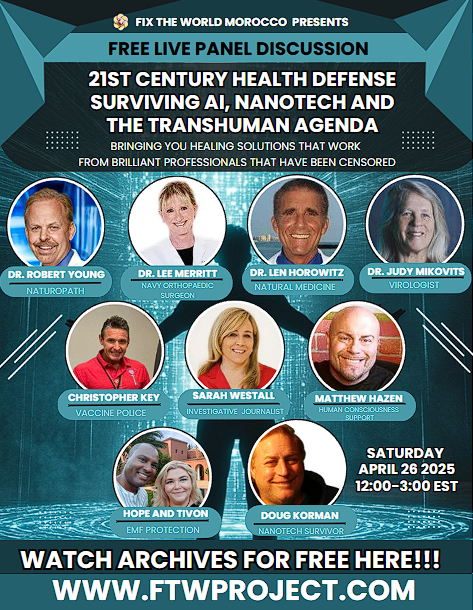One of the Most Important Books That You Will Read
Introduction
It is rare to come across a book that exposes how power really operates in the contemporary world.
I should know, having spent my academic career in the field of International Relations and having digested countless tepid books on global political economy.
None of the books I read as an academic comes close to matching Iain Davis’ latest work, The Technocratic Dark State, in terms of significance and real-time understanding of what is taking place in the world.
Davis’ book, which significantly develops an important series of essays published on Unlimited Hangout in 2025, stands alone as the single best analytical synthesis of up-to-date information on the global technocratic coup that has been underway since 2020.
In 20 chapters spanning over 400 pages, Davis meticulously exposes the real power structures and agendas in today’s world, as well as the intellectual foundations underpinning them and the deceptions used to conceal them.

Bogus Intellectual Foundations
The Technocratic Dark State begins by exposing the bogus intellectual foundations being invoked to legitimise the attempted technocratic takeover. Without Davis’ contribution, who would have given much thought to the neoreactionary “Dark Enlightenment,” or concepts such as “accelerationism,” “gov-corp” and “sovcorps”?
Most readers probably have no idea what those concepts mean, who coined them, or what kind of worldview they legitimise. Yet, as it turns out, Peter Thiel has long been partial to such ideas, and along with Elon Musk and other technocrats seems serious about implementing them. The highest-level agendas being enacted in the world today rest on these ideas.
While many commentators remain trapped in 20th terminology such as “fascism” and “communism,” the reality is that an entirely new political lexicon is required in order to understand the kind of totalitarianism that is being built today (i.e., global technocracy). It features strange terminology which Musk and others have openly used (e.g. “Dark MAGA” as an allusion to the “Dark Enlightenment”), but which is only decipherable for those in the know.
Davis performs a great service, not only in identifying and explaining such esoteric terminology and its significance, but also in challenging the intellectual framework in which they are embedded. Having studied some of the relevant literature myself (for instance, by Curtis Yarvin and Nick Land), I can only conclude that it amounts to intellectual garbage, flawed on virtually every level, and Davis does a solid job of exposing its limitations.
This is very important, because it means that there are no sound intellectual foundations behind the drive to implement global technocracy. It is purely a power grab — the largest in history by some distance.
Deception
Therefore, means must be found of fooling citizens into accepting the technocratic measures being advanced. I summarise some of them towards the end of my presentation for the third Omniwar symposium, and Davis addresses them in Chapters 5-8 of The Technocratic Dark State.
For example, Davis devotes an entire chapter to “Neoreactionary Christianity,” highlighting the ways in which Christianity has been hijacked by neoreactionaries to serve its purposes. Thiel, for instance, has plenty to say about the Antichrist while Palantir facilitates atrocities against the Palestinians.
A key message that Davis seeks to underscore is that there are “No Libertarians” among the technocrats. Although some of them masquerade as libertarians, technocracy is the opposite of libertarianism. To be blunt, it represents the most oppressive system of social and political control ever devised.
Nevertheless, voters have been deceived by Trump’s “techno-populism” and promises to create “efficiencies” via DOGE. In reality, Palantir has been granted the keys to US government databases, in line with the GovTech/Digital State agenda now being rolled out everywhere for purposes of “population control.” Palantir has also been awarded major contracts with nearly all, if not all, major US government agencies.
Virtually Humane Genocide
The ultimate consequence of an AI-powered Digital State, as I have argued, will be the use of digital technologies to facilitate the efficient “neutralisation” of dissidents (an extension of using drones to assassinate suspected “terrorists”).
Davis, too, is wise to such possibilities when he discusses Curtis Yarvin’s notion of a “humane alternative to genocide,” which involves “virtualized humans […] in permanent solitary confinement, waxed like a bee larva into a cell,” fully immersed in virtual reality, experiencing a “rich, fulfilling life in a completely imaginary world.”
This, supposedly, is the fate that awaits the “useless class,” whose future involves a diet of drugs and computer games, if we are to believe WEF ideologue Yuval Noah Harari. Such is the inhumane and psychotic thinking underpinning technocracy, and Davis does well to call it out.
Social Credit and Digital ID
In my opinion, the second half of The Technocratic Dark State is even stronger than the first, because it gets into the nitty-gritty of how technocracy is being implemented in 2025. It is hard to argue with the level of primary empirical evidence that is adduced.
In no uncertain terms, Davis warns of the dangers of a social credit system (SCS) linked to digital ID:
If we submit to a digital ID […], then, assuming we are compelled to use […] digital currency (linked to our digital ID), we will not be able to escape the social credit system, no matter how much we balk. Indeed, once those digital connections have been snapped into place like handcuffs, our behavior within the digital prison can be — will be — adjudicated in accordance with the SCS rules that govern us.
He makes no bones of the fact that we are faced with “oligarchs who are hyper-focused on exploiting digital technology for the purpose of enslaving humanity.”
Indeed, the UK Government’s flat ignoring of a recent petition signed by 2.75 million Britons (4% of the population, including children) against digital ID shows that the ruling class has no concern whatsoever for public opinion. As with the “Covid-19 vaccines” rollout, measures that are clearly not in the public interest are being driven forwards regardless.
The Globalist Oligarchy’s Conundrum
Davis draws a distinction between what he calls “NEONERD” oligarchs (i.e., “upstarts” seeking to exploit the new technologies for their own benefit) and the much more powerful “dynastic oligarchs,” whose control reaches back centuries. His argument is that their interests align in terms of a “high-risk, high-reward” plan to establish the New World Order in double-quick (accelerated) time.
Personally, I am not persuaded of the validity of the distinction, given that the “NEONERDS” (typically involving Big Tech) were evidently installed by more powerful actors. For example, as Davis has himself pointed out, Palantir did not come out of nowhere. Rather, it functioned as a privatised version of the abortive “Total Information Awareness” programme in 2003, funded by In-Q-Tel, the CIA’s venture capital arm.
Nevertheless, Davis is undoubtedly correct that a transnational oligarchy is seeking to enslave the global population through digital means.
The Network State
One significant development is Balaji Srinivasan’s idea of the “network state,” whereby superwealthy individuals band together to fund their own states. Improbable as this may sound, Davis provides multiple real world examples, such as Próspera, characterising them as parasitical entities designed to “suck wealth and resources out of nation-states and impoverish them” while concentrating their own power.
Just as the network state involves bypassing traditional authority structures, Davis suggests that distributed ledger technology (DLT) could be harnessed to achieve freedom by “removing the need for any intermediaries, such as governments or banks, or oligarchs.” This is an important point: the new technologies could be used to liberate instead of oppress; it all depends on who, if anyone, is controlling them.
Digital Currency
Chapters 16-18 are on digital currency and are some of the most important in the book. A permissionless DLT-based digital currency, Davis argues, theoretically “decentralizes and thus neuters the immense power of the banks to control both the issuance of money and consequently finance.”
Instead, however, the technocrats want to bring in decentralised finance using permissioned DLT to issue their own digital currencies — in effect, an attempt to privatise the international monetary and financial system, placing all the power in the hands of those who control it.
A key step towards such a system in the United States was the passage of the GENIUS Act, which, in Davis’ view, facilitates “a monumental deception upon the American people and the world.” Interoperable stablecoins that are clearly designed to function as digital dollars have been excluded from monetary controls simply by asserting they are not “national currency,” thus placing them beyond Congress’s regulatory jurisdiction.
The idea of interoperability really means “allowing for centralised control,” with all transactions being recorded on a single unified ledger as per the technocrats’ original vision in the 1930s. Today, this is manifest in the Bank for International Settlements’ proposal for a global “unified ledger.” Thus, despite apparent decentralisation as different digital currencies operate on their own blockchains, their interoperability will ultimately create a centralised outcome, which Davis calls the Synthetic Hegemony Currency.
Tokenising Nature
In an all-digital financial system, everything can be tokenised and placed on the blockchain, including so-called “natural assets.” It is estimated that the tokenized global economy will be worth $4-5 quadrillion (a quadrillion is a thousand trillion). In that context, Davis argues, the US national debt, currently at $38 trillion, appears as a drop in the ocean; the debt problem will be eradicated and expansion of the money supply will be able to continue unabated. That would be an astonishing outcome, and one that runs contrary to widely heard claims about imminent “economic collapse.”
The original attempt to tokenise nature came in the form of so-called “natural asset companies,” but these have met with some resistance (viz. the Natural Asset Company Prohibition Act introduced in March 2025 — outcome TBC). As publicly traded companies, NACs are subject to oversight by the Securities and Exchange Commission (SEC), so do not fit the model of evading federal regulation discussed above in the stablecoin context.
An even more audacious project is the Trump administration’s sovereign wealth fund, which aims to sell off 650 million acres of land (ca. 30% percent of the United States’ landmass), said to be the “sovereign property” of the US government. This is effectively theft, as it means that the land does not belong to the American people after all and can be signed over to oligarchs who can then tokenize the “ecosystem services” (a UN Agenda 21 term) that they have just purchased. Furthermore, their “natural capital” (another Agenda 21 term) can be traded over the counter (OTC), outside the regulated exchanges, evading SEC scrutiny.
If the public allows all this to go ahead, the result will be a privatised global financial system operating beyond regulatory scrutiny and handing ownership and control of everything (and everyone) to a criminal transnational oligarchy.
From a Multipolar World Order to a New World Order
Granted, there are different competing factions within that oligarchy. However, they all recognise that their interests are best served by the formation of a New World Order. In Davis’s view, this will be achieved, first through regionalisation (in line with the original technocratic vision of the division of the world into “Technates”), and then through the imposition of a single one-world government, ruling all of the regions. As with digital currencies, apparent decentralisation ultimately leads to global centralisation.
Parasitic Gov-Corp Technates
The final chapter, titled “Parasitic Gov-Corp Technates,” describes “a growing infestation of expanding private fiefdoms” that are eroding the public sector authority of national governments. They include “Network State Archipelagos, Freedom Cities, 15-Minute Cities, Resilient Cities, Charter Cities, Special Economic Zones (SEZs), Free Trade Zones (FTZs), Freeports, and ‘human settlements’” (another Agenda 21 term).
Davis focuses primarily on SEZs, noting that they are springing up across the world (I had no idea of the extent to which this is happening). They include, for instance, the Sirius Federal Territory (a former suburb of the Russian city of Sochi), Itana (on the outskirts of Lagos, Nigeria), and NEOM in Saudi Arabia. Davis mentions 424 SEZs in India, 45 in China, 16 in Iran, and 5 in Saudi Arabia. BlackRock and the UK Government are developing 12 SEZ “freeports.” In the US, the Trump administration plans for at least 10 “Freedom Cities.”
But, Davis observes, we should not be fooled into imagining that there is anything “free” about these oligarch-funded projects. In Thiel-funded Praxis (in Greenland), for instance,
Your freedom to roam will be geofenced by AI-linked EVs. Your assets and rights will be “on-chain” and limited by the Praxis AI’s application of the Social Credit System (SCS) rules on its unified ledger, which will be hosted on the Praxis arm of the Finternet. Any behavior that isn’t already restricted by your programmable Praxis digital currency will be policed by AI surveillance and attack drones.
This, ultimately, is the kind of future that awaits us all if the global technocratic coup is not put down.
Resistance
We do not have to accept such a future, however, as The Technocratic Dark State repeatedly underscores.
Resistance begins with recognising the reality of what is taking place:
If we don’t grasp the reality of the Omniwar and instead continue to fantasize that we can make the ceaselessly counterproductive political system work for us, we are collectively doomed. But if we unite, cast aside our horizontal divisions, acknowledge and firmly reject the vertical division [between the transnational oligarchy and the rest of humanity], the only hurdle that will be left for us to surmount is that of putting all of our own humanitarian solutions into effect.
The book ends on a note of optimism. Peaceful non-compliance with the oligarchs’ “demented edicts” and “insane schemes” opens the door to building “something truly better.”
Permissionless DLT, for example, could be used for emancipatory purposes. AI could be used to improve, rather than diminish, our lives. Decentralized finance (DeFi) and financial technology (Fintech) could “free up investment and lead to an explosion of economic, scientific, technological, and social innovation that benefits humanity, not just the oligarchy.”
Humanity thus stands at a pivotal juncture. With the oligarchs’ dream of enslaving humanity through digital means fast approaching realisation, everyone needs to understand the urgent message contained within these pages, and to act on it.
I encourage readers to buy as many copies of The Technocratic Dark State as they can and to distribute them as widely as possible.
Source: https://dhughes.substack.com/p/review-of-iain-davis-the-technocratic
Bitchute: https://www.bitchute.com/channel/YBM3rvf5ydDM/
Telegram: https://t.me/Hopegirl587
EMF Protection Products: www.ftwproject.com
QEG Clean Energy Academy: www.cleanenergyacademy.com





![Evidence Suggests the COVID Shots Are Responsible for Soaring RSV Cases Throughout the U.S. & Canada [VIDEO]](https://www.hopegirlblog.com/wp-content/uploads/2022/10/Evidence-Suggests-the-COVID-Shots-Are-Responsible-for-Soaring-RSV-Cases-Throughout-the-U.S.-Canada-VIDEO-440x264.jpg)







